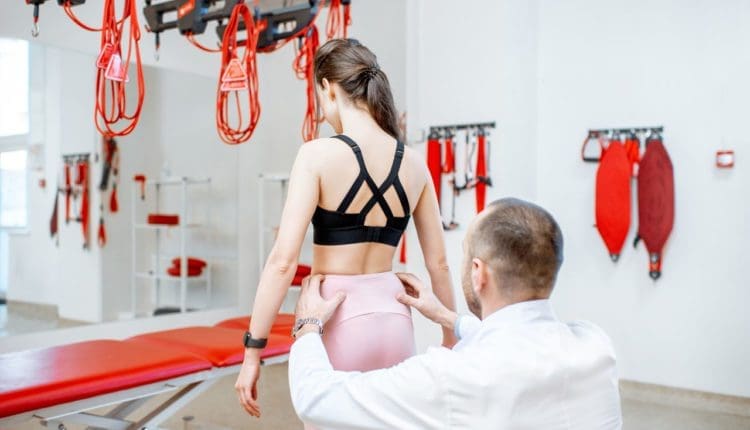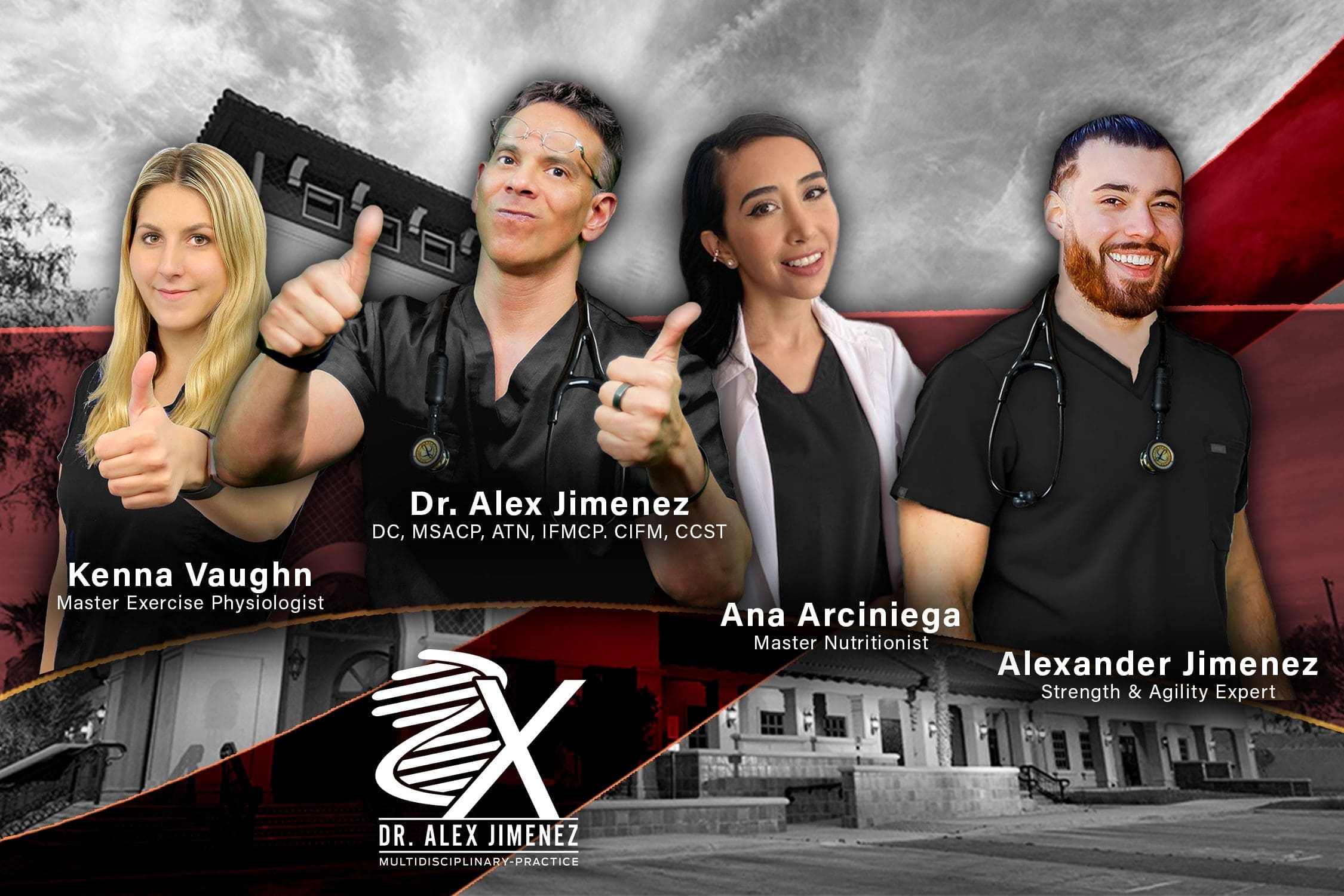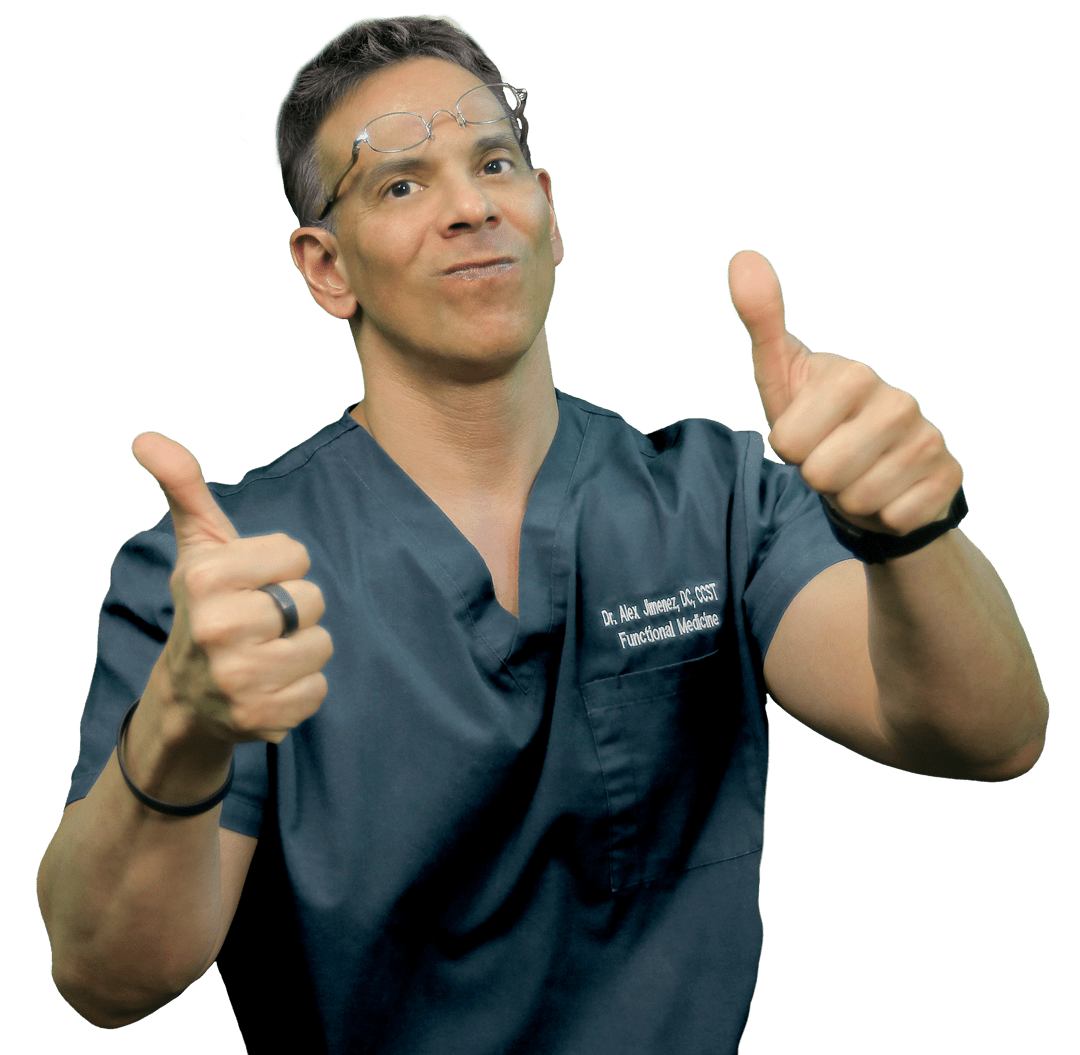Durable Medical Equipment for Injury Recovery
The Vital Role of Durable Medical Equipment and Integrative Care in Recovering from Motor Vehicle Accident Injuries

Motor vehicle accidents (MVAs) can cause a wide range of musculoskeletal injuries, from minor sprains to severe spinal damage, significantly impacting a person’s mobility, independence, and quality of life. Recovery from these injuries often requires a comprehensive approach that includes specialized medical devices, known as Durable Medical Equipment (DME), and integrative medical care. This blog post explores the types of musculoskeletal injuries caused by MVAs, the critical role of DME in rehabilitation, and the expertise of professionals like Dr. Alexander Jimenez, a dual-licensed chiropractor and nurse practitioner in El Paso, Texas, who combines advanced diagnostics, chiropractic care, and integrative medicine to support recovery. This article aims to inform and empower individuals recovering from auto accidents while optimizing for search engines with relevant keywords and structured content.
Understanding Musculoskeletal Injuries from Motor Vehicle Accidents
Motor vehicle accidents are a leading cause of musculoskeletal injuries, which affect the body’s muscles, bones, joints, ligaments, and tendons. These injuries can range from mild to severe, depending on the force of the collision, the position of the body during impact, and the individual’s physical condition. Common injuries include:
- Whiplash: A neck injury caused by the rapid back-and-forth motion of the head, often seen in rear-end collisions. Symptoms include neck pain, stiffness, and headaches.
- Back and Spinal Injuries: These can include herniated discs, vertebral fractures, or spinal misalignments (subluxations), leading to chronic pain and reduced mobility.
- Soft Tissue Injuries: Sprains, strains, and tears in muscles, tendons, or ligaments, which can cause swelling, bruising, and limited movement.
- Joint Injuries: Damage to shoulders, knees, or hips from the impact, often resulting in pain and reduced range of motion.
- Nerve Damage: Compression or irritation of nerves, which may cause tingling, numbness, or radiating pain, as seen in conditions like sciatica.
The sudden forces in an MVA, even at low speeds, can disrupt the body’s natural alignment and function. For example, a study found that 40.2% of MVA patients required ongoing treatment for persistent pain, with headaches and low back pain increasing the number of treatments needed (Dies & Strapp, 1992). Without prompt and proper care, these injuries can lead to chronic pain, disability, and a reduced quality of life.
Why Timely Intervention Matters
Seeking treatment within 72 hours of an accident is critical to prevent long-term complications. Delayed symptoms, such as pain or stiffness, may appear hours or days after the accident, making early intervention essential. Chiropractic care, physical therapy, and the use of DME can address these injuries early, reducing inflammation, restoring function, and preventing chronic issues.
References
Dies, S., & Strapp, J. W. (1992). Chiropractic treatment of patients in motor vehicle accidents: A statistical analysis. PMC. https://pmc.ncbi.nlm.nih.gov Jimenez, A. (2025). Injury Medical & Chiropractic Clinic. El Paso Back Clinic. https://elpasobackclinic.com/
The Role of Durable Medical Equipment (DME) in Recovery
Durable Medical Equipment (DME) refers to reusable medical devices designed to assist in recovery, improve mobility, and enhance quality of life for individuals with injuries. Medical professionals often prescribe DME to support rehabilitation after MVAs, helping patients regain function and independence. These devices are critical for managing pain, supporting injured areas, and facilitating safe participation in physical therapy.
Types of DME for MVA Recovery
- Mobility Aids
- Examples: Canes, walkers, crutches, wheelchairs, and four-wheel-drive wheelchairs.
- Purpose: These devices help individuals with limited mobility move safely, reducing the risk of falls and further injury. For example, a walker can support someone recovering from a leg or back injury, while a wheelchair may be necessary for severe spinal injuries (Family Health Associates, n.d.).
- Impact: Mobility aids restore independence by allowing patients to perform daily tasks, such as walking to the bathroom or navigating their home.
- Orthotic Devices and Braces
- Examples: Cervical collars, back braces, knee braces, and ankle supports.
- Purpose: Braces stabilize injured areas, promote proper alignment, and reduce strain during movement. For instance, a back brace can support the spine after a herniated disc, while a cervical collar helps manage whiplash by limiting neck movement (PhysioRoom, n.d.).
- Impact: These devices alleviate pain, prevent further damage, and support proper healing by maintaining correct posture and alignment.
- Exercise and Rehabilitation Equipment
- Examples: Resistance bands, balance boards, Pilates reformers, and exercise balls.
- Purpose: These tools assist in physical therapy by improving strength, flexibility, and coordination. Pilates reformers, for example, provide low-impact resistance to strengthen core muscles and support spinal alignment, minimizing the risk of reinjury (Pilates Reformers Plus, n.d.).
- Impact: Rehabilitation equipment helps patients rebuild strength and mobility, essential for returning to daily activities or work.
- Assistive Devices for Daily Living
- Examples: Grab bars, shower chairs, elevated toilet seats, and ramps.
- Purpose: These devices make daily tasks safer and more manageable for individuals with limited mobility or strength. For example, grab bars can prevent falls in the bathroom, while ramps facilitate wheelchair access (Crossbay Physical Therapy, n.d.).
- Impact: Assistive devices enhance quality of life by enabling patients to maintain independence in their homes.
- Traction and Decompression Devices
- Examples: Cervical traction units and spinal decompression tables.
- Purpose: These devices relieve pressure on the spine, reducing pain from conditions like herniated discs or nerve compression. They are often used in chiropractic settings to complement manual adjustments (Jimenez, 2025).
- Impact: Traction devices can accelerate recovery by reducing inflammation and improving spinal alignment.
Importance of Proper DME Selection
Choosing the right DME is crucial for effective recovery. Medical professionals, such as physical therapists, chiropractors, or nurse practitioners, assess the patient’s injuries, mobility needs, and lifestyle to recommend appropriate devices. For example, a patient with a spinal injury may require a custom-fitted back brace and a walker, while someone with whiplash might benefit from a cervical collar and resistance bands for gentle neck exercises. Improper or poorly fitted equipment can worsen injuries or delay healing, emphasizing the need for professional guidance (Penn Spine and Ortho, n.d.).
DME also plays a legal role in personal injury cases. Detailed documentation of prescribed equipment, such as invoices and medical reports, supports insurance claims and legal settlements by demonstrating the extent of the injury and the necessity of treatment (Power Liens, 2024). This documentation ensures patients receive compensation for medical expenses, including DME costs.
Impact on Recovery and Quality of Life
DME significantly enhances recovery by:
- Reducing Pain: Braces and traction devices alleviate pressure on injured areas, minimizing discomfort.
- Restoring Function: Mobility aids and rehabilitation equipment help patients regain strength and movement.
- Promoting Independence: Assistive devices enable patients to perform daily tasks, reducing reliance on caregivers.
- Improving Quality of Life: By facilitating safe movement and reducing pain, DME helps patients return to work, hobbies, and social activities.
For example, a patient recovering from a spinal injury may initially use a wheelchair, transition to a walker with physical therapy, and eventually regain full mobility with the help of exercise equipment. This progression helps restore confidence and independence, which are crucial for both emotional and physical well-being.
References
Crossbay Physical Therapy. (n.d.). Support home health products aid recovery pain injury treatment Howard Beach New York. https://www.crossbayphysicaltherapy.com/support-home-health-products-aid-recovery-pain-injury-treatment-howard-beach-new-york.html Family Health Associates. (n.d.). Spinal cord injury overview. https://fhahermiston.com/patient-education/healthwise/?DOCHWID=ug2941 Penn Spine and Ortho. (n.d.). Assistive devices for spine injury patients. https://pennspineandortho.com/spine-and-injury/assistive-devices-for-spine-injury-patients/ PhysioRoom. (n.d.). Back supports & braces. https://www.physioroom.com/back-supports-braces Pilates Reformers Plus. (n.d.). Key features of a reformer machine for Pilates. https://pilatesreformersplus.com/blogs/news/key-features-of-a-reformer-machine-for-pilates Power Liens. (2024, June 11). The vital role of Durable Medical Equipment (DME) in personal injury recovery. https://blog.powerliens.com/the-vital-role-of-durable-medical-equipment-dme-in-personal-injury-recovery/ Jimenez, A. (2025). Injury Medical & Chiropractic Clinic. El Paso Back Clinic. https://elpasobackclinic.com/
Dr. Alexander Jimenez: A Leader in Integrative MVA Recovery
Dr. Alexander Jimenez, DC, APRN, FNP-BC, is a dual-licensed chiropractor and board-certified family nurse practitioner based in El Paso, Texas, with over 25 years of experience treating MVA-related injuries. His unique combination of chiropractic expertise and medical training allows him to provide comprehensive care that addresses both the physical and systemic effects of trauma. Dr. Jimenez’s practice, Injury Medical & Chiropractic Clinic, is renowned for its integrative approach, combining chiropractic adjustments, functional medicine, and advanced diagnostics to promote healing and long-term wellness.
Dual-Scope Diagnosis and Treatment
Dr. Jimenez’s dual licensure enables a “dual-scope” approach, blending chiropractic and medical perspectives to create personalized treatment plans. This approach involves:
- Chiropractic Assessments: Evaluating spinal alignment, joint function, and soft tissue damage through manual examinations and functional movement screens.
- Medical Evaluations: Assessing systemic factors, such as inflammation, hormonal imbalances, or metabolic issues, that may affect recovery.
- Advanced Diagnostics: Using tools like X-rays, MRIs, CT scans, and electromyography (EMG) to identify subtle injuries, such as disc herniations or nerve compression, that may not be visible in initial exams (Jimenez, 2025).
This dual-scope method ensures a thorough understanding of the injury’s root causes. For example, a patient with back pain after an MVA may have both a spinal misalignment and systemic inflammation. Dr. Jimenez addresses the misalignment with chiropractic adjustments while using functional lab testing to identify nutritional deficiencies or hormonal imbalances that could delay healing.
Role of Advanced Imaging
Advanced imaging is critical for accurate diagnosis and treatment planning. Dr. Jimenez employs:
- X-rays: To detect fractures, dislocations, or spinal misalignments.
- MRIs and CT Scans: To identify soft tissue injuries, disc herniations, or nerve compression.
- Electromyography (EMG): To assess nerve function and detect damage that may cause tingling or numbness.
- Functional Lab Testing: To evaluate metabolic, hormonal, and nutritional factors that influence recovery.
These tools provide objective evidence of injuries, which is essential for both treatment and legal documentation in personal injury cases. Accurate imaging ensures targeted interventions, reducing the risk of chronic pain or disability (Jimenez, 2025).
Chiropractic and Integrative Medicine in Recovery
Dr. Jimenez’s integrative approach combines chiropractic care with functional medicine to address the root causes of MVA injuries. Key components include:
- Spinal Adjustments: Correcting misalignments to relieve nerve pressure, reduce pain, and restore mobility.
- Soft Tissue Therapy: Techniques like massage or myofascial release to reduce muscle tension and improve circulation.
- Rehabilitation Exercises: Utilizing DME, such as resistance bands or balance boards, to strengthen muscles and enhance coordination.
- Nutritional Guidance: Addressing inflammation and supporting healing through personalized diet plans and supplements.
- Acupuncture: Stimulating acupoints to reduce pain, improve blood flow, and calm the nervous system.
This holistic approach not only treats symptoms but also prevents long-term complications. For example, a patient with whiplash may receive spinal adjustments to correct neck alignment, nutritional advice to reduce inflammation, and a cervical collar to stabilize the injury during recovery. Dr. Jimenez’s clinic is El Paso’s largest mobility, flexibility, and agility center, integrating chiropractors, nurse practitioners, nutritionists, and physical therapists to deliver measurable health outcomes (Jimenez, 2025).
Legal Documentation in Personal Injury Cases
Dr. Jimenez’s dual licensure is particularly valuable in personal injury cases. As a nurse practitioner, he can provide detailed medical reports, prescribe DME, and coordinate diagnostic tests, while his chiropractic expertise ensures accurate documentation of musculoskeletal injuries. This comprehensive documentation, including imaging results and treatment plans, supports insurance claims and legal settlements by proving the extent of injuries and the necessity of care. His meticulous intake process, including detailed questionnaires about the accident and symptoms, strengthens legal cases by correlating injuries with the MVA event (Personal Injury Doctor Group, 2017).
References
Jimenez, A. (2025). Injury Medical & Chiropractic Clinic. El Paso Back Clinic. https://elpasobackclinic.com/ Jimenez, A. (2025). Dr. Alexander Jimenez DC, APRN, FNP-BC, IFMCP, CFMP, ATN. LinkedIn. https://www.linkedin.com/in/dralexjimenez/ Personal Injury Doctor Group. (2017). Car accident recovery with chiropractic and sports therapy. https://personalinjurydoctorgroup.com
How DME and Integrative Care Work Together
The combination of DME and integrative care maximizes recovery outcomes for MVA patients. For example:
- Case Study: Whiplash Recovery
A patient with whiplash may receive a cervical collar to stabilize the neck, spinal adjustments to correct misalignments, and acupuncture to reduce pain. Physical therapy with resistance bands strengthens neck muscles, while nutritional guidance reduces inflammation. This multi-faceted approach, guided by Dr. Jimenez, accelerates healing and prevents chronic pain. - Case Study: Spinal Injury
A patient with a herniated disc may use a back brace and a spinal decompression table to relieve pressure on the spine. Chiropractic adjustments correct misalignments, while rehabilitation exercises, such as those performed with a Pilates reformer, build core strength. Functional medicine addresses systemic inflammation, ensuring a holistic recovery.
By integrating DME with chiropractic care, physical therapy, and functional medicine, patients achieve faster recovery, greater independence, and improved quality of life. Dr. Jimenez’s expertise ensures that each treatment plan is tailored to the patient’s unique needs, supported by advanced diagnostics and legal documentation.
References
Jimenez, A. (2025). Car crash wellness protocol: A guide to recovery. PushAsRx Athletic Training Centers. https://pushasrx.com Oakmed LLC. (n.d.). Medical equipment in physical therapy. https://oakmedllc.com/medical-equipment-in-physical-therapy/
Conclusion
Musculoskeletal injuries from motor vehicle accidents can significantly impact a person’s life, but with the right care and tools, recovery is achievable. Durable Medical Equipment, such as mobility aids, braces, and rehabilitation tools, plays a vital role in restoring function, reducing pain, and enhancing independence. Professionals like Dr. Alexander Jimenez, with his dual expertise as a chiropractor and nurse practitioner, provide integrative care that addresses both the physical and systemic effects of injuries. By combining advanced diagnostics, chiropractic adjustments, functional medicine, and proper DME selection, patients can achieve lasting recovery and improved quality of life. If you’ve been in an MVA, consult a specialized provider promptly and explore how DME and integrative care can support your journey to healing.
References
Crossbay Physical Therapy. (n.d.). Support home health products aid recovery pain injury treatment Howard Beach New York. https://www.crossbayphysicaltherapy.com/support-home-health-products-aid-recovery-pain-injury-treatment-howard-beach-new-york.html
Dies, S., & Strapp, J. W. (1992). Chiropractic treatment of patients in motor vehicle accidents: A statistical analysis. *PMC*. https://pmc.ncbi.nlm.nih.gov
Family Health Associates. (n.d.). Spinal cord injury overview. https://fhahermiston.com/patient-education/healthwise/?DOCHWID=ug2941
Jimenez, A. (2025a). Car crash wellness protocol: A guide to recovery. *PushAsRx Athletic Training Centers*. https://pushasrx.com
Jimenez, A. (2025b). Injury Medical & Chiropractic Clinic. *El Paso Back Clinic*. https://elpasobackclinic.com/
Jimenez, A. (2025c). Dr. Alexander Jimenez DC, APRN, FNP-BC, IFMCP, CFMP, ATN. *LinkedIn*. https://www.linkedin.com/in/dralexjimenez/
Oakmed LLC. (n.d.). Medical equipment in physical therapy. https://oakmedllc.com/medical-equipment-in-physical-therapy/
Penn Spine and Ortho. (n.d.). Assistive devices for spine injury patients. https://pennspineandortho.com/spine-and-injury/assistive-devices-for-spine-injury-patients/
Personal Injury Doctor Group. (2017). Car accident recovery with chiropractic and sports therapy. https://personalinjurydoctorgroup.com
PhysioRoom. (n.d.). Back supports & braces. https://www.physioroom.com/back-supports-braces
Pilates Reformers Plus. (n.d.). Key features of a reformer machine for Pilates. https://pilatesreformersplus.com/blogs/news/key-features-of-a-reformer-machine-for-pilates
Power Liens. (2024, June 11). The vital role of Durable Medical Equipment (DME) in personal injury recovery. https://blog.powerliens.com/the-vital-role-of-durable-medical-equipment-dme-in-personal-injury-recovery/
Post Disclaimers
Professional Scope of Practice *
The information herein on "Durable Medical Equipment for Injury Recovery" is not intended to replace a one-on-one relationship with a qualified health care professional or licensed physician and is not medical advice. We encourage you to make healthcare decisions based on your research and partnership with a qualified healthcare professional.
Blog Information & Scope Discussions
Welcome to El Paso's Premier Wellness and Injury Care Clinic blog, where Dr. Alex Jimenez, DC, FNP-C, a board-certified Family Practice Nurse Practitioner (FNP-C) and Chiropractor (DC), presents insights on how our team is dedicated to holistic healing and personalized care. Our practice aligns with evidence-based treatment protocols inspired by integrative medicine principles, similar to those found on dralexjimenez.com, focusing on restoring health naturally for patients of all ages.
Our areas of chiropractic practice include Wellness & Nutrition, Chronic Pain, Personal Injury, Auto Accident Care, Work Injuries, Back Injury, Low Back Pain, Neck Pain, Migraine Headaches, Sports Injuries, Severe Sciatica, Scoliosis, Complex Herniated Discs, Fibromyalgia, Chronic Pain, Complex Injuries, Stress Management, Functional Medicine Treatments, and in-scope care protocols.
Our information scope is limited to chiropractic, musculoskeletal, physical medicine, wellness, contributing etiological viscerosomatic disturbances within clinical presentations, associated somato-visceral reflex clinical dynamics, subluxation complexes, sensitive health issues, and functional medicine articles, topics, and discussions.
We provide and present clinical collaboration with specialists from various disciplines. Each specialist is governed by their professional scope of practice and their jurisdiction of licensure. We use functional health & wellness protocols to treat and support care for the injuries or disorders of the musculoskeletal system.
Our videos, posts, topics, subjects, and insights cover clinical matters, issues, and topics that relate to and directly or indirectly support our clinical scope of practice.*
Our office has reasonably attempted to provide supportive citations and has identified the relevant research studies or studies supporting our posts. We provide copies of supporting research studies available to regulatory boards and the public upon request.
We understand that we cover matters that require an additional explanation of how they may assist in a particular care plan or treatment protocol; therefore, to discuss the subject matter above further, please feel free to ask Dr. Alex Jimenez, DC, APRN, FNP-BC, or contact us at 915-850-0900.
We are here to help you and your family.
Blessings
Dr. Alex Jimenez DC, MSACP, APRN, FNP-BC*, CCST, IFMCP, CFMP, ATN
email: coach@elpasofunctionalmedicine.com
Licensed as a Doctor of Chiropractic (DC) in Texas & New Mexico*
Texas DC License # TX5807
New Mexico DC License # NM-DC2182
Licensed as a Registered Nurse (RN*) in Texas & Multistate
Texas RN License # 1191402
ANCC FNP-BC: Board Certified Nurse Practitioner*
Compact Status: Multi-State License: Authorized to Practice in 40 States*
Graduate with Honors: ICHS: MSN-FNP (Family Nurse Practitioner Program)
Degree Granted. Master's in Family Practice MSN Diploma (Cum Laude)
Dr. Alex Jimenez, DC, APRN, FNP-BC*, CFMP, IFMCP, ATN, CCST
My Digital Business Card






 Again, I Welcome You.
Again, I Welcome You.
Comments are closed.